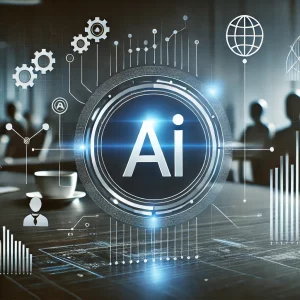How AI is Powering Virtual Assistants like Alexa and Siri

In recent years, virtual assistants such as Amazon’s Alexa, Apple’s Siri, Google Assistant, and Microsoft’s Cortana have become ubiquitous in our everyday lives. These AI-powered systems help us manage tasks, control devices, provide information, and entertain us—all through voice commands. Virtual assistants are transforming how we interact with technology, offering convenience and functionality like never before. But behind the sleek voice interface of Alexa or Siri lies a sophisticated system powered by artificial intelligence (AI) that makes these assistants so effective. In this article, we will explore how AI powers virtual assistants and the technology that enables them to understand, learn, and assist users.
What are Virtual Assistants?
Virtual assistants are AI-based software applications designed to perform tasks or provide services to users based on voice or text commands. They can be found in smartphones, smart speakers, tablets, and other devices. Virtual assistants are used for a wide range of tasks, including setting reminders, answering questions, playing music, providing weather updates, managing smart home devices, and more.
While each virtual assistant has unique features and capabilities, they all rely on similar AI technologies that allow them to understand natural language and respond in a way that is useful to the user.
The Role of AI in Virtual Assistants
AI is the foundation of virtual assistants, enabling them to process and respond to user inputs in real-time. Several key AI technologies are involved in powering these assistants:
1. Natural Language Processing (NLP)
Natural Language Processing (NLP) is one of the core technologies behind virtual assistants like Alexa and Siri. NLP allows computers to understand and process human language, enabling virtual assistants to interpret spoken commands and respond meaningfully.
NLP consists of several subfields, including speech recognition, syntax parsing, semantics, and context understanding. For example, when you say “Alexa, play some music,” the assistant needs to:
- Recognize the speech you’ve given (speech recognition).
- Parse the words into a structure that makes sense (syntax).
- Understand what you’re asking for—playing music—and interpret your intent (semantic analysis).
Siri and Alexa are trained on vast datasets of conversational language, allowing them to recognize not just individual words but the context and meaning behind those words. They can differentiate between simple commands like “turn off the lights” and more complex queries like “What’s the weather in New York tomorrow?” NLP is what enables virtual assistants to understand natural, conversational speech, making them feel more human-like.
2. Speech Recognition and Processing
Speech recognition technology is the first step in the interaction process. When you speak to a virtual assistant, it needs to convert your speech into text. This process is powered by machine learning algorithms that have been trained on vast amounts of audio data to recognize various accents, dialects, and speech patterns.
These systems are not limited to recognizing isolated words but also identify sentence structure and context. Advanced speech recognition models can distinguish between background noise, different speakers, and unclear pronunciation.
Once the speech is converted to text, the virtual assistant can apply NLP techniques to interpret the meaning. For example, if you ask Siri, “What’s the weather in Paris?”, Siri will use its speech recognition capabilities to understand the question and then process it using NLP.
3. Machine Learning and Deep Learning
Machine learning (ML) and deep learning (DL) are critical to the effectiveness of virtual assistants. These algorithms allow virtual assistants to improve over time by learning from user interactions and continuously updating their knowledge base.
- Machine learning enables virtual assistants to adapt to individual user preferences and behavior. For instance, if a user frequently asks Alexa to play jazz music, Alexa will learn this preference and prioritize jazz in future music requests.
- Deep learning, a subset of machine learning, is used in complex tasks such as speech recognition, context understanding, and language translation. Deep learning networks are capable of processing large amounts of data to understand nuanced meanings in human speech. These neural networks are designed to mimic the structure and functioning of the human brain, improving their ability to make sense of highly variable inputs.
Over time, as these AI systems process more data and interactions, they become more accurate in interpreting and responding to user requests. For example, Siri or Alexa might improve its ability to understand different accents or better predict the kinds of tasks a user might want to complete based on their previous interactions.
4. Contextual Understanding and Personalization
One of the most powerful aspects of AI-powered virtual assistants is their ability to offer personalized experiences. These assistants learn from your interactions and adjust their responses to better suit your needs.
For example, if you frequently ask Siri to remind you of appointments on Mondays at 9 a.m., Siri may begin to proactively suggest setting reminders for other appointments based on your behavior. Similarly, Alexa can learn your preferences in music, news, and even shopping habits over time, offering recommendations based on prior interactions.
Contextual understanding is essential for virtual assistants to maintain a conversational flow. It helps them interpret ambiguous statements or questions that don’t have a direct answer. For instance, if you say, “What’s the weather like today?” the assistant will use your location and the current time to determine which weather information to provide. By understanding the context of the user’s location, past queries, and time of day, AI-powered assistants can provide more relevant and accurate responses.
5. Integration with Other Services and Smart Devices
AI-powered virtual assistants can perform a variety of tasks by integrating with other services and devices. This includes making appointments, sending texts, controlling smart home devices, and even placing orders for groceries. These integrations are facilitated by APIs (Application Programming Interfaces) and cloud services, which allow the assistant to access external data and communicate with other apps or devices.
For example, when you say, “Alexa, turn off the lights,” Alexa communicates with your smart home system via the cloud, sends a signal to the light bulbs, and turns them off. Similarly, when Siri reads a text message or answers a question about the stock market, it retrieves real-time information from various databases and services to deliver the most up-to-date answer.
This seamless integration with third-party services enables virtual assistants to provide comprehensive functionality. Siri can connect to Apple’s ecosystem of apps and devices, while Alexa can integrate with Amazon’s shopping platform and smart home devices, offering a holistic experience.
6. Continuous Improvement Through Data
The AI systems powering virtual assistants are constantly evolving. By collecting vast amounts of data from user interactions, these systems continue to refine their understanding of language, improve accuracy, and personalize responses. This ongoing data collection helps virtual assistants adapt to user preferences, regional variations, and even emerging trends.
However, this reliance on data also raises privacy concerns. Virtual assistant companies such as Amazon and Apple ensure user data is anonymized and encrypted, but users must still trust these companies with sensitive information. To address these concerns, many virtual assistants now offer users more control over their data, allowing them to delete voice recordings or adjust privacy settings.
The Future of Virtual Assistants
AI-powered virtual assistants are continuously evolving. As machine learning and deep learning algorithms advance, we can expect virtual assistants to become even more intuitive and capable of handling more complex tasks. The future of virtual assistants may involve:
- Improved Natural Conversation: Virtual assistants may become capable of maintaining longer, more fluid conversations, responding to multi-step queries and providing more contextually aware answers.
- Greater Integration with the Internet of Things (IoT): As smart homes and connected devices become more common, virtual assistants will have more control over various aspects of daily life, from managing appliances to monitoring health devices.
- Advanced Personalization: Virtual assistants will become even more adept at learning and anticipating user preferences, potentially predicting needs before they arise.
Conclusion
AI is at the heart of virtual assistants like Alexa, Siri, and others, enabling them to understand, learn, and respond to user commands in increasingly intelligent ways. With technologies like NLP, machine learning, deep learning, and speech recognition, these systems are becoming more powerful, offering personalized, intuitive, and seamless experiences. As AI continues to evolve, virtual assistants will only grow smarter, helping users with an ever-widening array of tasks, while also pushing the boundaries of what voice-based AI can achieve in our daily lives.





